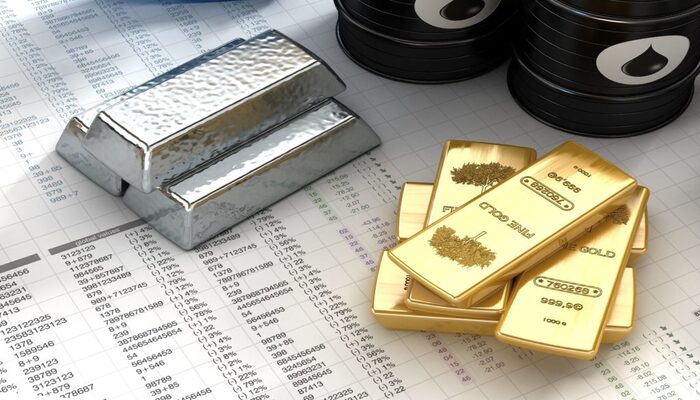Investing in precious metals has become a go-to strategy for those seeking to protect their wealth, especially when the financial markets are unpredictable. Whether it’s gold, silver, or platinum, these valuable assets have stood the test of time, offering a reliable hedge against economic uncertainty.
For South African investors, investing in precious metals holds even more appeal. With inflationary pressures and currency fluctuations, precious metals can provide a secure and stable option for safeguarding your financial future.
Curious about how you can get started and why it’s such a smart move? Keep reading to discover how investing in precious metals could be the financial protection you’ve been looking for.
Why Precious Metals?
Precious metals like gold, silver, platinum, and palladium are tangible assets that have maintained their value for centuries. Unlike paper currencies, which can be affected by inflation or government policies, investing in precious metals offers a hedge against such risks.
In the South African context, where inflation rates can be volatile and the currency fluctuates, precious metals present a stable and reliable form of investment.
The Historical Significance of Precious Metals
Throughout history, investing in precious metals has been synonymous with financial security. Gold, for example, has been a store of value for thousands of years, from ancient Egypt to modern times.
In South Africa, gold mining has played a significant role in the country’s economy, and the metal continues to be a key asset for both individual and institutional investors. As a result, investing in precious metals is deeply rooted in South Africa’s financial culture.
Silver, too, has seen its value rise over the decades. While it may not always have the same price tag as gold, silver’s accessibility makes it a popular choice for many investors looking to enter the precious metals market.
How Precious Metals Offer Financial Protection
-
Hedge Against Inflation One of the main reasons people turn to investing in precious metals is to protect their wealth from inflation. The value of paper currencies tends to decrease over time due to inflation, but precious metals, especially gold, often rise in value during inflationary periods. This makes them an ideal option for South African investors looking to safeguard their savings.
-
Diversification of Your Investment Portfolio Diversifying an investment portfolio is a key principle of risk management, and investing in precious metals offers an effective way to achieve this. By adding precious metals to an investment mix that might already include stocks, bonds, and real estate, you reduce your exposure to risk. This strategy is especially important in South Africa, where economic fluctuations and geopolitical issues can affect the performance of traditional investments.
-
Safe Haven During Economic Instability Economic downturns and market crashes often lead investors to seek refuge in precious metals. In times of uncertainty, such as during recessions or political instability, investing in precious metals can provide a sense of financial security. In South Africa, where the political landscape can sometimes lead to market volatility, gold and other precious metals are a reliable option to shield against economic uncertainty.
-
Store of Value Precious metals are not subject to the whims of the stock market or government policies. As physical assets, they hold intrinsic value. This makes investing in precious metals a way to preserve wealth over the long term. For South African investors, this is particularly relevant, as the value of the rand has experienced significant fluctuations in recent years.
Which Precious Metals Should You Invest In?
When considering investing in precious metals, there are several options to choose from. Here’s a brief overview of the most popular ones:
-
Gold: Gold is often the first choice for investors looking to protect their wealth. It is highly liquid, universally accepted, and has a long history of retaining its value. Whether you buy gold bullion, coins, or ETFs, investing in gold is a common practice in South Africa.
-
Silver: Silver tends to be more affordable than gold, making it a great entry point for new investors. Although its value can be more volatile than gold, silver has historically performed well, especially during periods of economic growth.
-
Platinum and Palladium: These metals are particularly important for investors in South Africa due to the country’s status as one of the world’s largest producers of platinum. Investing in platinum can be an excellent way to diversify your portfolio while benefiting from the country’s mining industry.
Benefits of Investing in Precious Metals in South Africa
-
Protection from Currency Depreciation As South Africa has experienced fluctuations in its currency, the rand, investing in precious metals provides a safeguard against the depreciation of the local currency. Gold, in particular, has a proven track record of holding its value during times when other assets might falter.
-
Exposure to the South African Mining Industry South Africa is a global leader in the mining of gold, platinum, and other precious metals. By investing in precious metals, South African investors can capitalize on the country’s mining prowess. Not only does this investment provide financial protection, but it also supports the local economy.
-
Tax Benefits and Incentives In some cases, investing in precious metals can offer tax advantages. For instance, the South African government offers incentives for investors purchasing gold coins and bullion. Additionally, profits from the sale of precious metals may be subject to capital gains tax, but the tax treatment is often more favorable than other investment vehicles.
How to Get Started with Investing in Precious Metals
Starting your journey into investing in precious metals is relatively straightforward. Here are the basic steps to consider:
-
Do Your Research: Before you begin, it’s essential to understand the different types of precious metals available for investment. Research the market trends, historical performance, and how different metals respond to economic changes.
-
Choose Your Investment Vehicle: There are several ways to invest in precious metals. You can buy physical bullion, coins, or ETFs. Each has its own pros and cons, so it’s essential to choose the right method based on your financial goals and risk tolerance.
-
Work with a Reputable Dealer: If you choose to buy physical precious metals, ensure that you’re working with a trusted dealer. Look for dealers with a good reputation and transparent pricing. Many reputable dealers operate in South Africa, and online platforms make it easy to purchase precious metals.
-
Diversify Your Portfolio: As with any investment, diversification is crucial. Don’t put all your money into one type of metal. Instead, create a balanced portfolio that includes a mix of metals, as well as other investment types.
Conclusion
Investing in precious metals is a wise strategy for financial protection, particularly in a country like South Africa, where economic and political instability can create uncertainty in the markets. By adding gold, silver, platinum, or palladium to your investment portfolio, you can safeguard your wealth against inflation, currency depreciation, and economic downturns.
Whether you’re a seasoned investor or just starting, precious metals offer a reliable path to long-term financial security. By making informed decisions and working with reputable dealers, South African investors can harness the power of investing in precious metals to protect their financial future.





